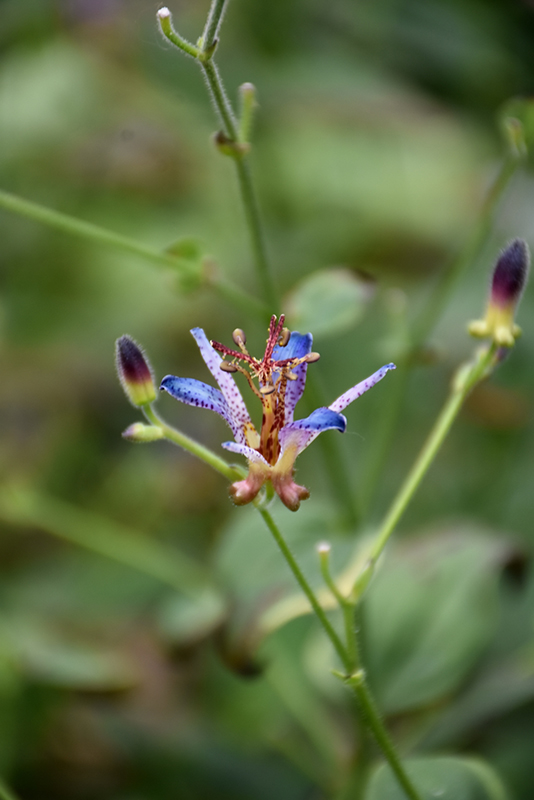Dark Beauty Toad Lily
Tricyrtis formosana 'Dark Beauty'
Height: 30 inches
Spacing: 6 inches
Sunlight:
![]()
![]()
Hardiness Zone: 4b
Other Names: Toadlily
Description:
This exceptional variety is noted for attractive purple spotted orchid-like flowers with yellow throats, appearing in late summer; long stems with slightly hairy, dark green foliage; deserves a spot where it can be seen up close; an excellent cut flower
Ornamental Features
Dark Beauty Toad Lily has white orchid-like flowers with yellow throats and deep purple spots at the ends of the stems from late summer to mid fall, which emerge from distinctive deep purple flower buds, and which are interesting on close inspection. The flowers are excellent for cutting. Its attractive tomentose oval leaves remain dark green in color throughout the season.
Landscape Attributes
Dark Beauty Toad Lily is an open herbaceous perennial with an upright spreading habit of growth. Its relatively fine texture sets it apart from other garden plants with less refined foliage.
This plant will require occasional maintenance and upkeep, and is best cleaned up in early spring before it resumes active growth for the season. Gardeners should be aware of the following characteristic(s) that may warrant special consideration;
- Spreading
Dark Beauty Toad Lily is recommended for the following landscape applications;
- Mass Planting
- General Garden Use
- Naturalizing And Woodland Gardens
Planting & Growing
Dark Beauty Toad Lily will grow to be about 26 inches tall at maturity, with a spread of 6 inches. When grown in masses or used as a bedding plant, individual plants should be spaced approximately 6 inches apart. It grows at a medium rate, and under ideal conditions can be expected to live for approximately 15 years. As an herbaceous perennial, this plant will usually die back to the crown each winter, and will regrow from the base each spring. Be careful not to disturb the crown in late winter when it may not be readily seen!
This plant does best in partial shade to shade. It requires an evenly moist well-drained soil for optimal growth. This plant should not require much in the way of fertilizing once established, although it may appreciate a shot of general-purpose fertilizer from time to time early in the growing season. It is not particular as to soil pH, but grows best in rich soils. It is somewhat tolerant of urban pollution, and will benefit from being planted in a relatively sheltered location. Consider applying a thick mulch around the root zone in both summer and winter to conserve soil moisture and protect it in exposed locations or colder microclimates. This is a selected variety of a species not originally from North America. It can be propagated by division; however, as a cultivated variety, be aware that it may be subject to certain restrictions or prohibitions on propagation.

